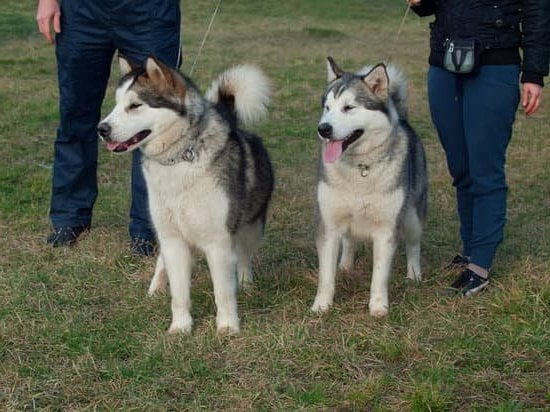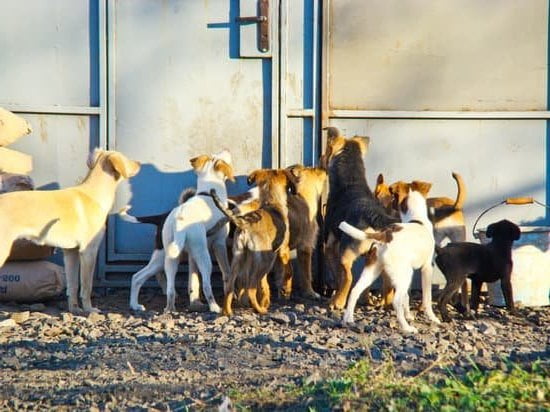Training a dog to be comfortable and content when left alone is a crucial skill for both the pet and its owner. Dogs are social creatures that thrive on companionship, but teaching them independence is essential for their well-being and your peace of mind. In this article, we will explore how to train a dog to be on its own effectively, ensuring a positive experience for all involved.
Establishing a consistent routine is key when it comes to teaching your furry friend independence. Dogs thrive on structure and predictability, so creating a daily schedule that includes designated alone time will help them feel secure and know what to expect. By setting clear boundaries and expectations from the start, you lay the foundation for successful independence training.
Building your dog’s confidence through gradual exposure to being alone is another important aspect of the training process. Start with short periods of separation and gradually increase the duration as your pup becomes more comfortable.
Positive reinforcement techniques such as treats and praise can also play a significant role in encouraging independence and rewarding good behavior. By taking small steps and praising their achievements along the way, you can help your dog develop the necessary skills to be on its own confidently.
Setting the Foundation
When it comes to training a dog to be on its own, one of the key elements is establishing a consistent routine. Dogs thrive on predictability and structure, so creating a daily schedule can help them feel secure and confident when alone. Start by setting specific times for feeding, walks, playtime, and rest periods. This routine will not only benefit your dog’s behavior but also make it easier for you to monitor their progress.
Consistency is crucial when teaching your dog independence. Make sure that you set clear boundaries and rules from the beginning. For example, if you want your dog to spend some time alone in a certain area of the house, consistently reinforce this behavior by guiding them to that spot each time you leave. By doing this regularly, your dog will start associating that area with being on its own.
In addition to establishing a routine, it is important to gradually increase the amount of time your dog spends alone. This gradual exposure will help build their confidence and reduce any anxiety they may feel when separated from you. Start with short intervals of alone time and slowly extend the duration as your dog becomes more comfortable. Remember to always use positive reinforcement techniques such as treats and praise to encourage good behavior during these solo periods.
| Key Training Techniques | Description |
|---|---|
| Consistent Routine | Establishing clear schedules for feeding, walks, playtime, and rest periods. |
| Setting Boundaries | Guiding your dog to designated areas consistently reinforces desired behaviors. |
| Gradual Exposure | Increase alone time slowly to build your dog’s confidence over time. |
Building Confidence
One of the key components in training a dog to be on its own is building confidence through gradual exposure to alone time. Dogs, like humans, can experience anxiety when separated from their owners for extended periods. To help your furry friend feel more at ease with solitude, it’s essential to start slowly and increase the duration of alone time gradually.
Start by leaving your dog alone for short intervals, such as 5-10 minutes, while you step outside or into another room. Use this time to observe your dog’s behavior – if they become anxious or exhibit signs of stress, it may be necessary to take a step back and shorten the time apart. Over time, extend these intervals slowly as your dog becomes more comfortable being by themselves.
Reinforce positive behavior during these brief periods of alone time by offering treats and praise when your dog remains calm and relaxed. This positive reinforcement will help create a positive association with being on their own. Additionally, providing engaging toys or puzzles can help keep your dog occupied and mentally stimulated while they are alone. By gradually increasing the duration of alone time and rewarding good behavior, you can help your dog build confidence and independence over time.
| Key Points | Details |
|---|---|
| Start Slowly | Begin with short intervals of alone time and observe your dog’s reaction |
| Positive Reinforcement | Reward good behavior with treats, praise, and engaging toys to create a positive association |
| Gradually Increase Time | Extend alone time duration slowly as your dog becomes more comfortable being on its own |
Positive Reinforcement
Training a dog to be comfortable being on its own requires patience, consistency, and most importantly, positive reinforcement. By using treats and praise effectively, you can encourage your furry friend to feel more confident and independent when left alone. Here are some tips on how to use positive reinforcement to help your dog thrive in solitude:
- Start by introducing short periods of alone time gradually, providing your dog with a treat or toy before leaving them alone. This creates a positive association with being by themselves.
- When your dog remains calm and relaxed during these initial moments of separation, make sure to reward them with verbal praise and another treat. This reinforces the behavior of being content on their own.
- As you extend the duration of time that your dog spends alone, continue to offer treats intermittently to reinforce their independence. Remember to praise them enthusiastically each time they handle being by themselves well.
In addition to using treats and praise as rewards for good behavior, it’s important to avoid scolding or punishing your dog if they show signs of distress or anxiety when left alone. Instead, focus on building their confidence through positive reinforcement techniques. With patience and consistent training, your dog will learn that being on its own can be a positive and rewarding experience.
- Consider keeping a stash of special treats that are only given during training sessions for being alone. This creates extra motivation for your dog to associate solo time with something enjoyable.
- Use a happy tone of voice when praising your pup for exhibiting independence. Dogs respond well to positive affirmations, so make sure to express joy and approval when they behave well during alone time.
- Remember that every dog is unique, so observe what motivates your furry companion the most – whether it’s tasty treats or enthusiastic praise – and tailor your reinforcement strategies accordingly for the best results in training them to be on their own.
By implementing positive reinforcement techniques consistently and compassionately, you can help your dog feel secure and content when spending time by themselves. Showcasing an understanding approach towards training is key in fostering independence in our canine companions as they learn how to be on their own successfully over time.
Desensitization Techniques
When training your dog to be on its own, desensitization techniques can play a crucial role in helping them feel comfortable and secure when left alone. This process involves gradually exposing your dog to being alone for short periods of time, gradually increasing the duration as they become more accustomed to it. Here are some effective desensitization techniques to help your furry friend adjust to separation:
- Start by leaving your dog alone for just a few minutes at a time, gradually increasing the duration over days or weeks.
- Use cues like grabbing your keys or putting on your shoes to simulate leaving, but don’t actually go anywhere at first. This helps normalize the separation process.
- Provide comforting items such as their favorite toys or blankets while they are alone to create a sense of security and familiarity.
Implementing these desensitization techniques can help reduce your dog’s anxiety and build their confidence in being on their own. It’s important to be patient and consistent in your training approach, as every dog will respond differently. By taking gradual steps and providing positive reinforcement, you can help your canine companion feel more at ease when separated from you.
- Always ensure that you praise and reward your dog for calm behavior when practicing desensitization techniques.
- Monitor their progress closely and make adjustments as needed based on their reactions and comfort level.
- Seek guidance from a professional dog trainer if needed, especially if your dog is showing signs of distress or separation anxiety during the training process.
By incorporating these desensitization techniques into your training regimen, you can help your dog develop the confidence and independence needed to be comfortable on its own. Remember that every step towards independence is a milestone worth celebrating, so be sure to acknowledge and reward their progress along the way.
Creating a Safe Space
Choosing the Right Space
When selecting a spot for your dog’s safe space, consider their preferences and needs. Some dogs prefer quiet, enclosed spaces, while others may feel more at ease in an open area with plenty of sunlight. Take into account your dog’s behavior and tendencies when choosing the location for their relaxation spot.
Creating a Comfortable Environment
Once you have chosen the right space for your dog’s relaxation area, focus on making it comfortable and inviting. Provide cozy bedding, toys, water, and perhaps even some soothing music or white noise to help calm your dog while they are alone. Additionally, ensure that the area is free from any potential hazards or dangers that could cause stress or harm to your furry friend.
By establishing a safe space for your dog to relax, you are not only aiding in their independence training but also promoting their overall well-being and happiness. Remember to check in periodically on your dog while they’re in their safe space and gradually increase the amount of time they spend there alone as they become more comfortable. With patience, consistency, and love, you can successfully train your dog to be on its own without feeling anxious or distressed.
Avoiding Separation Anxiety
Separation anxiety is a common issue among dogs when left alone, causing distress and potentially destructive behavior. However, with the right techniques and strategies, you can help your furry friend feel more comfortable being on its own. Here are some tips for managing stress and avoiding separation anxiety in your dog:
Gradual Departures and Returns
One effective way to reduce separation anxiety in dogs is to practice gradual departures and returns. Start by leaving your dog alone for short periods and gradually increase the time as they become more comfortable. When you return, keep your greeting calm and low-key to avoid reinforcing any anxious behavior.
Provide Mental Stimulation
Keeping your dog mentally stimulated can help prevent them from feeling anxious or bored when alone. Consider providing puzzle toys, interactive feeders, or long-lasting chews to keep their minds occupied. Engaging their brains can help alleviate stress and anxiety while you’re away.
Comforting Environment
Create a soothing environment for your dog while you’re apart by leaving comforting items such as a favorite blanket or toy. You can also play calming music or leave the TV on at a low volume to provide background noise. A familiar scent, like an unwashed piece of clothing, can also help ease separation anxiety in dogs.
By implementing these tips and being patient with your training efforts, you can effectively manage stress and separation anxiety in your dog. Remember that every dog is unique, so it may take some time to find the right combination of techniques that work best for your furry companion. With consistency and positive reinforcement, you can train your dog to be on its own successfully.
Monitoring Progress
When it comes to training a dog to be on its own, monitoring progress is key to ensuring successful independence. It is important to track your dog’s improvement over time and make necessary adjustments to your training techniques. By closely monitoring how your dog responds to being alone and analyzing any setbacks or improvements, you can tailor your approach accordingly.
One effective way to monitor progress is by setting specific goals for your dog’s independence training. Whether it’s gradually increasing the amount of time your dog can be alone or observing their behavior during solo periods, having clear objectives can help you gauge how well your furry friend is adapting.
Keep a log or journal of your dog’s solo sessions, noting any signs of anxiety, restlessness, or progress. This will provide valuable insights into what is working and what may need tweaking in your training plan.
Additionally, utilize tools such as video cameras or apps that allow you to check in on your dog remotely while they are alone. This can give you real-time feedback on how they are coping with being by themselves and help you identify any areas that require improvement.
By actively monitoring your dog’s behavior during solo time, you can intervene when necessary, provide positive reinforcement when they exhibit good behavior, and adjust your training techniques accordingly. Remember, consistency and patience are key when it comes to training a dog to be comfortable in their own company.
Conclusion
Training a dog to be comfortable being on its own is a process that requires patience, consistency, and understanding. By following the steps outlined in this guide, you can help your furry friend develop the confidence and independence needed to stay alone without feeling anxious or stressed. Remember, every dog is unique, so it’s essential to tailor your training approach to suit your dog’s individual needs and personality.
One of the key aspects of training your dog to be on its own is establishing a consistent routine. Dogs thrive on predictability and structure, so providing them with a regular schedule can help ease them into being alone.
Gradual exposure to alone time, positive reinforcement through treats and praise, desensitization techniques, and creating a safe space are all valuable tools in helping your dog feel comfortable when left alone. These methods can help build their confidence and reassure them that being by themselves is not a scary experience.
As you work towards achieving success in training your dog to be on its own, remember to monitor their progress closely. Keep track of how they respond to being alone, adjust your training techniques as needed, and celebrate each milestone along the way.
With dedication and consistency, you can help your beloved pet become more independent and self-assured when you’re away. Ultimately, by investing time and effort into teaching your dog how to be on its own, you are not only fostering their well-being but also strengthening the bond between you both.
Frequently Asked Questions
How Do You Train a Dog to Be by Themselves?
Training a dog to be by themselves can be achieved through gradual desensitization and positive reinforcement. Start by leaving them alone for short periods, then gradually increase the time while rewarding good behavior.
How Long Does It Take for a Dog to Learn to Be Alone?
The time it takes for a dog to learn to be alone varies depending on the individual dog and their history. Some dogs may adjust quickly, while others may take weeks or even months of consistent training and practice.
Can You Train Your Dog to Be Independent?
While you can train your dog to be more independent, it’s important to remember that dogs are social animals that thrive on companionship. Encouraging independence should not come at the cost of neglecting their need for interaction and attention. Balancing independence with quality time together is key.

Welcome to the blog! I am a professional dog trainer and have been working with dogs for many years. In this blog, I will be discussing various topics related to dog training, including tips, tricks, and advice. I hope you find this information helpful and informative. Thanks for reading!





